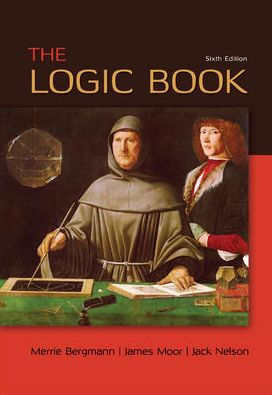Table of Contents
Chapter 1: Basic Notions of Logic
1.1 Background1.2 Why Study Logic1.3 Sentences, Truth-Values, and Arguments1.4 Deductive Validity and Soundness1.5 Inductive Arguments1.6 Logical Consistency, Truth, Falsity, and Equivalence1.7 Special Cases of Validity
Chapter 2: Sentential Logic: Symbolization and Syntax2.1 Symbolization and Truth-Functional Connectives2.2 Complex Symbolizations2.3 Non-Truth-Functional Connectives2.4 The Syntax of SL
Chapter 3: Sentential Logic: Semantics3.1 Truth-Value Assignments and Truth-Tables for Sentences3.2 Truth-Functional Truth, Falsity, and Indeterminacy3.3 Truth-Functional Equivalence3.4 Truth-Functional Consistency3.5 Truth-Functional Entailment and Truth-Functional Validity3.6 Truth-Functional Properties and Truth-Functional Consistency
Chapter 4: Sentential Logic: Truth-Trees4.1 The Truth-Tree Method4.2 Truth-Tree Rules for Sentences Containing 'tilde', 'wedge', and 'ampersand'4.3 Rules for Sentences Containing 'horseshoe' and 'triple bar'4.4 More Complex Truth-Trees4.5 Using Truth-Trees to Test for Truth-Functional Truth, Falsity, and Indeterminacy4.6 Truth-Functional Equivalence4.7 Truth-Functional Entailment and Truth-Functional Validity
Chapter 5: Sentential Logic: Derivations5.1 The Derivation System SD5.2 Applying the Derivation Rules of SD5.3 Basic Concepts of SD5.4 Strategies for Constructing Derivations in SD5.5 The Derivation System SD+
Chapter 6: Sentential Logic: Metatheory6.1 Mathematical Induction6.2 Truth-Functional Completeness6.3 The Soundness of SD and SD+6.4 The Completeness of SD and SD+
Chapter 7: Predicate Logic: Symbolization and Syntax7.1 The Limitations of SL7.2 Predicates, Individual Constants, and Quantity Terms of English7.3 Introduction to PL7.4 Quantifiers Introduced7.5 The Formal Syntax of PL7.6 A-, E-, I-, and O-Sentences7.7 Symbolization Techniques7.8 Multiple Quantifiers with Overlapping Scope7.9 Identity, Definite Descriptions, and Properties of Relations, and Functions
Chapter 8: Predicate Logic: Semantics8.1 Informal Semantics for PL8.2 Quantificational Truth, Falsehood, and Indeterminacy8.3 Quantificational Equivalence and Consistency8.4 Quantification Entailment and Validity8.5 Truth-Functional Expansions8.6 Semantics for Predicate Logic with Identity and Functors8.7 Formal Semantics of PL and PLE
Chapter 9: Predicate Logic: Truth-Trees9.1 Expanding the Rules for Truth-Trees9.2 Truth-Trees and Quantificational Consistency9.3 Truth-Trees and Other Semantic Properties9.4 Trees for PLE9.5 Fine-Tuning the Tree Method
Chapter 10: Predicate Logic: Derivations10.1 The Derivation System PD10.2 Applying the Derivation Rules of PD10.3 Basic Concepts of PD10.4 Strategies for Constructing Derivations in PD10.5 The Derivation System PD+10.6 The Derivation System PDE
Chapter 11: Predicate Logic: Metatheory11.1 Semantic Preliminaries for PD11.2 Semantic Preliminaries for PLE11.3 The Soundness of PD, PD+, and PDE11.4 The Completeness of PD, PD+, and PDE11.5 The Soundness of the Tree Method11.6 The Completeness of the Tree Method
Selected Bibliography
Index







